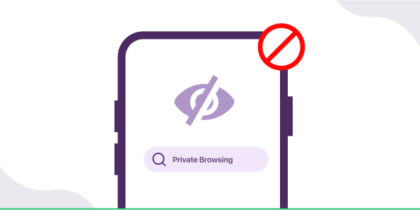Table of Contents
The Purdue model, developed in the 1990s, has become a widely accepted reference architecture across various industries.
Today’s question is the viability of a network architecture based on the Purdue model in contemporary technologies.
We will discuss if the Purdue model is relevant architecture for contemporary network construction, potential alternatives, prevalent security challenges in modern technologies, and recommended solutions.
Let’s move on!

What is the Purdue Model and How Is It Related To Networking?
The Purdue model, created in the 1990s, is like a blueprint for how computers control manufacturing processes.
It divides tasks into six layers to show their importance and security. This model is mainly used to keep industrial control systems (ICS) safe, covering physical processes and supervisory controls.
Regarding networking, the Purdue model was adopted by a group called ISA99. They used it to create a plan for dividing networks in industrial settings, showing how different parts connect and depend on each other.
In this plan, they split the system into:
- Information Technology (IT) and Operational Technology (OT) zones have six layers.
- The most important stuff is in the lower layers, while less critical things are in the higher layers.
- A demilitarized zone (DMZ) separates IT and OT for better security.
Understanding Purdue Model’s Layered Structure
The Purdue model works in these layers for networking:
Layer 0
It is where the actual production occurs, with hardware like motors and sensors.
Layer 1
This layer involves devices that monitor and control Layer 0, such as programmable logic controllers.
Layer 2
It is the process management layer, housing systems like SCADA for human control.
Layer 3
The layer manages the production workflow, collecting data from lower levels and using databases.
Layer 3.5 (DMZ)
It acts as a barrier between IT and OT networks to maintain separation.
Layer 4
This layer is dedicated to IT, hosting databases, and email servers but needs to be more secure due to internet connectivity.
Layer 5
The enterprise network gathers data from IT and OT for business decisions and has the least control. It may include cloud infrastructure accessed via the internet.
Purdue Model and Advancing Technologies: Is It Viable Today?
The Purdue model, crafted in the 1990s, structured how computers control manufacturing. While it’s still in use, changes in technology like cloud and IoT challenge its effectiveness.
Challenges with the Purdue Model
Despite being organized, the Purdue model needs help. Modern tech services often operate outside a company’s premises, forcing critical devices from lower levels to connect to the Internet, posing security risks.
Security Concerns
The Purdue model’s hierarchy, designed for clear boundaries, must fully secure actual processes.
With IoT, the model’s six layers must align better with the streamlined three-layer approach, causing security concerns, especially with the IoT gateway acting as a potential weak point.
Need for Streamlined Architecture
The Purdue model’s hierarchical design needs to keep up with the integration of IT in operational technology (OT). As more data is hosted externally, a more straightforward architecture is crucial for security.
Internet-of-Things (IoT) Devices Security Challenges
The surge in X-as-a-Service models has driven the integration of industrial IoT devices into cloud-based solutions.
However, these devices pose security challenges due to limited processing capabilities, compatibility issues with older hardware, and the need for more adherence to modern security standards.
Security Constraints
IoT devices, constrained by limited storage and processing power, become vulnerable when connected to the Internet.
Their low capabilities hinder the implementation of robust security features, raising the risk of compromised communications.
Access control becomes crucial, yet default and weak passwords often increase the risk as more devices join the network.
Management Challenges
The multitude of IoT devices complicates management. It requires synchronized updates and security measures across diverse devices and networking protocols.
Identifying vulnerabilities becomes challenging, as security incidents are inevitable in environments with numerous IoT devices, making proactive security measures essential.
Data Privacy and Integrity
Ensuring the privacy and integrity of data produced by IoT devices is critical. Proper processing, secure transmission, and anonymization or pseudonymization of sensitive IoT data are imperative for comprehensive security.
High Availability Concerns
High availability is essential in sectors like healthcare and energy, where IoT devices are crucial. The risks escalate when these devices are accessed through various platforms, necessitating redundancy and eliminating single points of failure.
Security Concerns in Cloud Computing
While cloud computing offers accessibility, scalability, and cost benefits, shared environments pose challenges like misconfiguration, potentially leading to security incidents.
If improperly configured, APIs create vulnerabilities, risking unauthorized access to sensitive data.
Data Sharing Risks
The ease of data sharing in the cloud, often through link-based sharing, raises security concerns. Managing and controlling access becomes challenging, increasing the likelihood of unauthorized usage.
Access Control and Cyberattacks
The accessibility of cloud resources via the Internet exposes them to malicious entities. Proper access control is crucial, but weak passwords and phishing attempts can compromise security.
Breached user accounts provide complete control and pose significant threats, especially with the challenges of detecting credential misuse in the cloud.
Cryptography and Encryption
Cryptography, particularly encryption, is vital in securing the cloud. However, configuration errors and the traversal of data through the Internet create potential vulnerabilities, allowing attackers to reveal and alter encrypted data.
Expanding Network Edge: Security Implications
The shift towards IoT, cloud services, and as-a-service solutions expands the network perimeter, with more resources hosted outside organizations’ premises.
The network edge, where local networks interface with the Internet, becomes increasingly challenging to define and manage.
Security Challenges at the Edge
The security of hardware and software at the network edge is crucial due to their accessibility from the Internet.
Attacks, such as injecting malicious software, supply chain attacks, and the creation of botnets, become more likely as the network edge expands.
Attack Surface Growth
The expanding network edge creates a larger attack surface, making tampering and denial-of-service attacks more probable.
Attackers can hijack resources to power botnets, mask their operations, or mine cryptocurrencies.
Malicious Intent and Reconnaissance
Attackers may infect edge resources for malicious purposes, stealing credentials, redirecting traffic, installing malware, or conducting surveillance.
As data processing moves closer to sources, detecting such attacks becomes challenging.
Bring-Your-Own-Device (BYOD) Model
BYOD, allowing employees to use personal devices for work, is a cost-cutting strategy but introduces significant security challenges.
Privacy concerns, data control issues, and the potential for data leakage are vital considerations.
Privacy Dilemma
BYOD raises privacy concerns as employees use personal devices for work, complicating the separation of work and personal data.
Security measures like scanning network traffic may infringe on employee privacy, especially when decrypting encrypted traffic containing sensitive information.
Lack of Control and Management
BYOD undermines organizational control over data processing and transmission, with potential risks like employees inadvertently accessing malicious sites or sharing devices with family members.
The lack of management increases the likelihood of false positives, leading to the unintentional removal of personal data.
Data Leakage Risks
Using personal devices heightens the risk of data leakage, where undisclosed company information becomes public.
Data leakage can result from malware on an employee’s device, compromising sensitive data without intentional misconduct.
Is the Purdue Model Replaceable?
The Purdue model is like a step-by-step plan, separating different parts of a system neatly. It’s easy to understand because it transparently organizes things.
But, when looking for a newer model that fits today’s standards, there is a better match, especially for networks. One model that keeps coming up is called zero-trust architecture.
Zero-trust is different. It relies on something other than layers like Purdue. Instead, it constantly checks and adapts, rethinking how we trust things in a network.
It’s an approach to meet today’s technology-changing needs and security demands.
| Zero Trust Model | The Purdue Model | |
| Core Concept | Assumes zero trust in both internal and external networks. All entities are treated as untrusted until proven otherwise. | Based on a hierarchical structure with different levels, segregating enterprise networks into zones based on functionality and security requirements. |
| Network Architecture | Decentralized and flat network architecture. No implicit trust is granted based on network location. | Hierarchical architecture with clearly defined zones, such as enterprise, control, and field levels. |
| Access Control | Strict access controls are often based on the principle of least privilege. Continuous verification and authentication are essential. | Access controls are defined based on zones. The level of trust increases as one moves from the external to the internal zones. |
| Perimeter Definition | No reliance on traditional network perimeters. Security is enforced at the application and data level. | A firm support on well-defined edges between zones, with security measures concentrated at these boundaries. |
| Assumption about Trust | Trust is never assumed; it is continuously verified regardless of the location or origin of the request. | Trust is taken within a zone but not across zones. Cross-zone communication is subject to strict security controls. |
| Adaptability to Dynamic Changes | Well-suited for dynamic and cloud-based environments. Easily adaptable to changes in network configurations. | May face challenges in dynamic environments due to the rigid nature of predefined zones. Adjustments to the model may be needed for scalability. |
| Implementation Complexity | Implementation may require significant changes to existing network infrastructure and a robust identity and access management system. | Generally, it requires a well-structured network design and can be complex to implement, especially in large organizations. |
| Threat Mitigation | Effective against lateral movement and insider threats. Provides granular control over access. | Focused on containing and mitigating threats at zone boundaries. May face challenges in addressing insider threats within a zone. |
| Monitoring and Visibility | Emphasizes continuous monitoring and visibility into user and device activities across the network. | Monitoring is typically concentrated at zone boundaries, with less emphasis on internal zone activities. It may lack visibility into lateral movement within a zone. |
Can We Use the Purdue Model For IIoT?
The Purdue model is considered outdated for IIoT as data can not remain in traditional hierarchies. It is uncontrollable and does not remain in the system to be monitored by the Purdue model.
Is The Purdue Model Outdated?
The Purdue model is considered outdated, but one can only say that partially. The most critical concept of networking, called segmentation, is still valid and will last. The Purdue model brings segmentation; through the technique, the model will stay with other supporting models.
What is the Purdue Model of ICS Security?
The Purdue model is a structural framework for securing Industrial Control Systems (ICS). It segments physical processes, sensors, supervisory controls, operations, and logistics to enhance security.
Improving Security Without Starting from Scratch
Making an entirely new plan for a company’s computer system is challenging. It could be more realistic because there are essential applications that can’t be interrupted, especially if they’re ancient.
So, instead of changing everything, we can make more minor, intelligent changes to boost security.
The Purdue plan could improve today’s tech challenges, but we don’t have to toss it out.
We can keep using it to sort out important stuff in the system. The trick is to add some new security ideas, especially ones from the zero-trust plan.
Imagine the computer system is like a big house with different rooms. Some rooms have super important things, and some are just regular.
The Purdue plan helps us decide which room is what. But, to ensure nothing terrible gets into any space, we add a new layer of protection – like a particular lock that only lets in the right people.
So, we keep the Purdue plan for sorting, but we add this extra protection layer. It’s like having a guard at every room’s door, ensuring only the right people can enter.
This mix of the old Purdue plan and new zero-trust ideas gives us a safer computer system without starting from scratch.
What’s your opinion about integrating older technologies into new ones? Do you think they must be wholly retarded or could be used to complement the new structures?
Tell us in the comment section.



